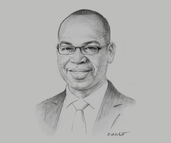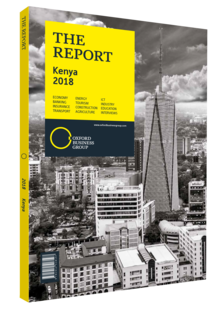Joshua Oigara, CEO and Managing Director, KCB Group : Interview

Interview : Joshua Oigara
What is the outlook for Kenya’s banking sector, and how should it look to finance key industries?
JOSHUA OIGARA: The sector is committed to funding key infrastructure projects, and we are using annuity financing as part of the public-private partnership (PPP) model to do this. In agriculture, one of the main challenges is to expand the use of aggregator models for producers. Although these exist for products such as tea and coconut, it should expand into other areas to further streamline the sector and boost efficiency.
The overall consensus both from industry actors and regulators is that there is a need for consolidation, especially given the size of the Kenyan economy. In five years we could expect the total number of banks to be between 20 and 25. However, there are different opinions on the speed at which this consolidation process should occur. Capital requirements should be higher and regulators should adopt a hybrid model for capital based on both the institution’s size and structural characteristics to avoid implementing a one-size-fits-all approach that may naturally benefit larger actors.
How would you describe the performance of the financial system in both public and private spheres?
OIGARA: Currently, our non-performing loans (NPL) ratio is 11.9-12% – one of the highest rates we have seen in the last decade. This is a result of the economic slowdown experienced in the second half of 2017. The key sectors affected by this are manufacturing and real estate, which are highly dependent on national and county level government investment. We should encourage new ways of financing projects via PPPs or other innovative methods that allow steadier cash flow into projects. This would help ease financing delays that can leave small and medium-sized enterprises vulnerable. The government should adopt a responsible fiscal policy in order to more prudently manage its finances. Fortunately, there are already signs that it is making sound progress on reducing its fiscal deficit by 2020.
To what extent are banks promoting innovation to adapt to the new reality of the financial sector?
OIGARA: Brick and mortar banking has been progressively diminishing over recent years. Today, agency and mobile banking is highly relevant due to its exponential growth and it now represents a bigger portion of banking activity than branches. Overall, the whole industry has shifted its focus and will continue to prioritise mobile banking, which now represents around 60% of total transactions. In the future this trend is set to continue with a particular focus on artificial intelligence, machine learning and credit-scoring algorithms. This will lead to the creation of models that allow us to analyse data efficiently and adapt products to the needs of the consumer while contributing to better decision making and efficiency.
Banks that do not invest heavily in technology could disappear within a decade. Consequently, lenders are now building innovation programmes with external actors through investment in incubation initiatives. Additionally, non-bank players are innovating and integrating some functions of traditional banks. This potential for competition is one reason why traditional institutions cannot afford to ignore the financial technology movement that is encroaching its territory. Banks therefore have three different options: they can choose to create their own entities, acquire them, or work in partnership with them.
When it comes to regulating these entities, a balance should be struck between innovation and regulation. The model should go beyond merely lending and financial sector transactions. It should focus on resolving different structural problems in a specific sector of the economy. For instance, there are many challenges to be addressed in health care, education, transport and logistics that could benefit from a skills and technology hybrid model. This, combined with a solid business plan, would allow them to move beyond money transfer platforms such as M-pesa and compete on a global scale.
You have reached the limit of premium articles you can view for free.
Choose from the options below to purchase print or digital editions of our Reports. You can also purchase a website subscription giving you unlimited access to all of our Reports online for 12 months.
If you have already purchased this Report or have a website subscription, please login to continue.

